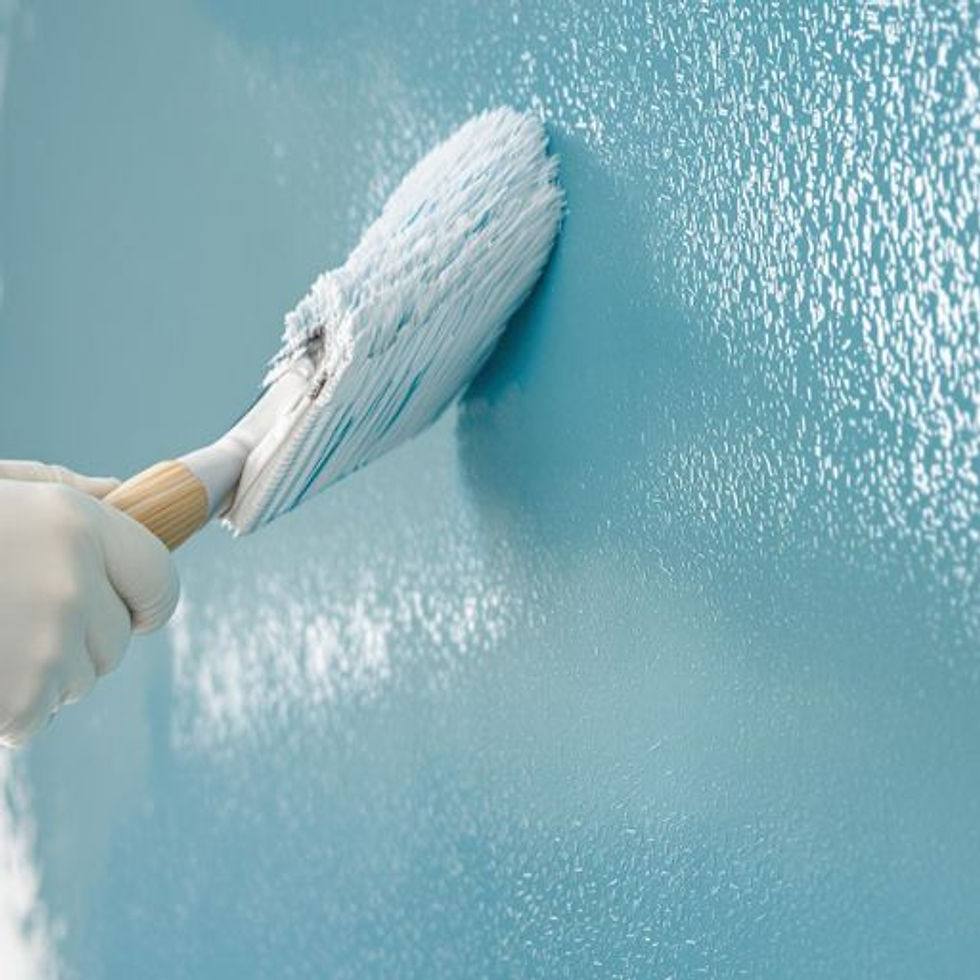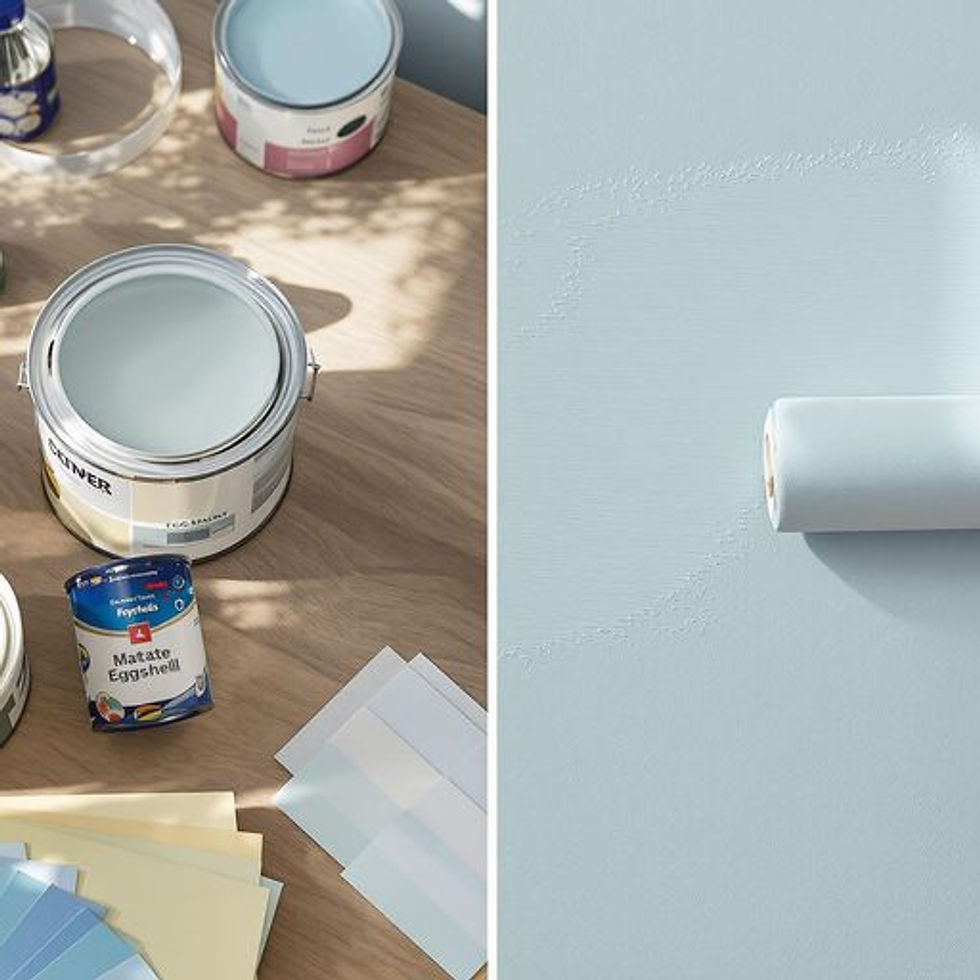Choosing Eco Friendly Paint Options for August Renovations
- Thomas Poole

- 3 days ago
- 5 min read
As August rolls around, many of us start thinking about home projects. If you're planning some interior updates, choosing the right paint is a big decision. We want our homes to look good, but we also care about what we're bringing into our living spaces. That's why we're looking into eco friendly interior paint options for our renovations.
Key Takeaways
Understanding what makes paint eco friendly involves looking at its ingredients and how it's made.
Low-VOC paints are a good choice because they release fewer harmful chemicals into the air.
We can explore natural paints, mineral-based paints, and check for sustainable brands when making our selections.
Understanding Eco Friendly Interior Paint
When we think about refreshing our homes for August, the paint we choose plays a big part. But not all paints are created equal, especially when we want to be kinder to the planet. So, what exactly makes a paint 'eco-friendly'? It's mostly about what's in the can and how it's made.
What Makes Paint Eco Friendly?
Generally, eco-friendly paints aim to reduce their environmental impact. This can mean a few things:
Lower VOCs (Volatile Organic Compounds): These are chemicals that can be released into the air as paint dries. They can affect air quality both inside and outside. Paints with very low or zero VOCs are a big step in the right direction.
Sustainable Ingredients: Some paints use plant-based binders or natural minerals instead of petroleum-based ones. Recycled content can also be a factor.
Manufacturing Process: How the paint is produced matters too. Companies that use renewable energy or have waste reduction programs often get a nod.
Packaging: Even the container counts. Recycled or recyclable packaging is a plus.
Benefits of Choosing Low-VOC Options
Going with low-VOC paints isn't just about being green; it has direct benefits for us and our living spaces. The most noticeable advantage is improved indoor air quality. When we paint a room with high-VOC paint, those chemicals can linger for days or even weeks, causing that strong paint smell and potentially leading to headaches or respiratory irritation for some people. Low-VOC options significantly cut down on these emissions.
Here are some key benefits:
Healthier Home Environment: Reduced chemical exposure means a safer space for everyone, including children and pets.
Less Odor: You won't have to air out the room for as long, and the smell is much milder.
Better for the Outdoors: Lower VOCs mean less pollution released into the atmosphere.
Often Biodegradable: Many natural or mineral-based paints break down more easily without harming the environment.
Choosing paints with fewer harsh chemicals is a simple change we can make that has a positive ripple effect on our health and the environment around us. It’s about making conscious choices for our homes.
Navigating Your Eco Friendly Paint Choices
So, you've decided to go green with your August renovations, which is fantastic! But now comes the part where we actually pick the paint. It can feel a bit overwhelming with all the options out there, but we're here to help break it down. We want to make sure you're choosing paints that are good for your home and good for the planet.
Exploring Natural and Mineral-Based Paints
When we talk about eco-friendly paints, natural and mineral-based options often come to mind first. These paints typically use ingredients derived from plants, minerals, and earth pigments. Think things like clay, lime, milk protein (casein), and plant oils. They tend to have very low or zero VOCs, which is a big plus for indoor air quality. We've found that clay paints, for example, can create a really beautiful, matte finish that feels soft and breathable. Lime wash is another great choice, offering a slightly textured, historic look that ages gracefully. It's also naturally resistant to mold and mildew, which is handy for bathrooms or kitchens.
Clay Paints: Made from clay, water, and natural pigments. They are highly breathable and can help regulate humidity.
Lime Washes: Created from slaked lime and water. They have a unique, soft sheen and are naturally antimicrobial.
Milk Paints: Traditionally made from milk protein (casein), lime, and pigments. They offer a durable, matte finish.
Identifying Sustainable Paint Brands
Beyond the ingredients, we also need to consider the brands themselves. A truly sustainable paint brand will think about their entire process, not just the final product. This includes how they source their raw materials, their manufacturing practices, and even their packaging. We look for brands that are transparent about their ingredients and their environmental impact. Some brands are even using recycled content in their paint or offering take-back programs for empty cans. It's worth spending a little time researching companies that are committed to reducing their footprint. Checking for third-party certifications can also be a helpful way to verify a brand's eco-friendly claims.
Here are a few things we consider when looking at brands:
Ingredient Transparency: Do they clearly list what's in their paint?
Certifications: Are they certified by reputable environmental organizations?
Packaging: Is the packaging recyclable or made from recycled materials?
Company Practices: Does the company have a stated commitment to sustainability in their manufacturing and operations?
Wrapping Up Your Eco-Friendly Painting Project
So, as we finish up our August renovation plans, we've seen that picking paint doesn't have to be complicated. We can make choices that are better for our homes and the planet. Whether we go with low-VOC or zero-VOC options, or even natural paints, there are good choices out there. It might take a little extra looking, but the results are worth it. We're excited to see how these greener paints transform our spaces, and we hope you feel ready to tackle your own projects with confidence. Happy painting!
Frequently Asked Questions
What exactly makes a paint considered 'green' or eco-friendly?
When we talk about eco-friendly paint, we're usually referring to paints that are better for the environment and for our health. This often means they have fewer harmful chemicals, especially something called Volatile Organic Compounds, or VOCs. These can be released into the air as the paint dries and can cause problems for people with allergies or breathing issues. Eco-friendly paints might also be made from natural stuff like plants or minerals, or come from companies that try hard to be good to the planet in how they make and package their products.
Why should we pick low-VOC paints for our home projects?
Choosing paints with low VOCs is a smart move for several reasons. For starters, it means less of those potentially yucky fumes floating around your home while you paint and after. This makes the air inside cleaner to breathe, which is especially important for kids, older folks, or anyone with breathing troubles. Plus, many low-VOC paints are just as good, if not better, than regular paints in terms of how they look and how long they last. It's a win-win for your home and your well-being.
Are there different kinds of eco-friendly paints, and how do we find trustworthy brands?
Absolutely! We can look into paints made from things like clay, lime, or even plant oils. These are often called natural or mineral-based paints. Then, when it comes to brands, we should check out companies that clearly state their commitment to the environment. This might involve using recycled materials in their cans, having strict rules about what goes into their paint, or even supporting environmental causes. Reading labels and doing a little online searching for brands known for their green practices will help us find the best fit.




Comments